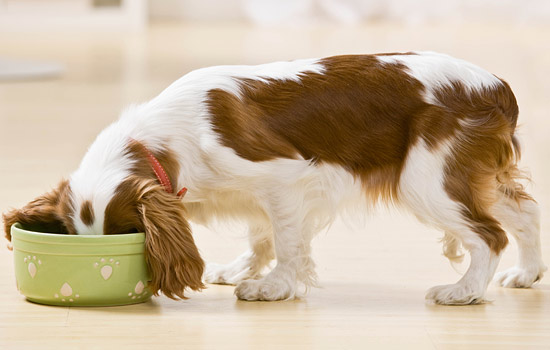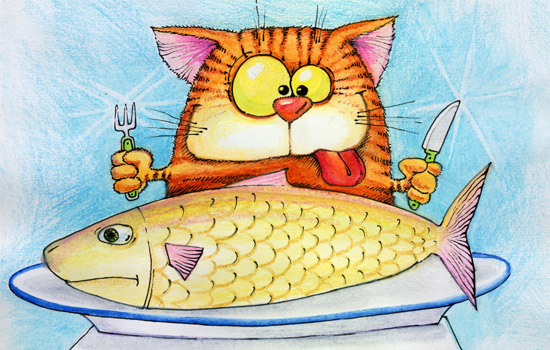Avoinna arkisin ma-to 8-20, pe 8-19.
La päivystys ajanvarauksella klo 9-17.
Special diet foods have been developed for the care of different illnesses, and they are sold only due to veterinarians orders at animal clinics. On the Finnish market, at the moment, you can find special foods from various manufacturers for the care of the following illnesses:
Overweight
The fat and energy content of these foods has been diminished and fibre has been added, the objective being to reduce calorie intake and with the indigestible fibre increase the mass of the food in order to moderate sensations of hunger. Once the ideal weight has been attained, it is possible to continue with food that has more calories than the weight loss diet; however the calorie content has to be low enough so as to prevent putting on weight, especially in castrated or sterilized animals.

The objective of these foods is to prevent the fluctuation of blood sugar levels using fibres or carbohydrates, possibly resulting in a reduction of insulin dosage.
High sensitivity to foodstuffs
The objective of these foods is to prevent allergic reactions such as an itching rash, chronic outer-ear inflammation and chronic gastroenteritis. These foods generally have only one carbohydrate source and only one animal protein source, which has been hydrolysed, which means that the molecular weight of the proteins have been chopped so small that the immunological system cannot identify them.
For example in digestive tract surgery, intestinal inflammation, illnesses of the pancreas, abdominal cavity swelling or rotation are states in which it is important to have extremely easily digestible foods, in which fat content is limited. Soluble fibres have been added to help the intestinal flora normalize.
Different diets are used depending on how far the kidney illness has progressed. The objective among others is to diminish the accumulation of nitrogenous waste substances in the body, and also help control blood pressure. Proteins, phosphorus and natrium have been reduced, and non-protein source calories and B-group vitamins have been added.
The objective among others is to reduce the load on the liver, slow down the progress of the damage and to bolster its functioning. Reducing the amount of copper will therefore avoid too much copper accumulating into liver cells, and the necessary amount of branched chain amino acids avoid, for example, ammoniac concentration.
For the care of struvite kidney stones in dogs and cats there is a diet available, both for dissolving the stones and for prevention. Getting less magnesium and phosphorus will reduce the concentration of these minerals in the urine, and getting less protein and more natrium will increase the quantity of urine thereby reducing the concentration of struvites. Acid urine produced by food helps dissolving /prevention. The formation of calcium oxalate stones may be prevented by a diet, but not dissolved. For dogs there are diets to prevent silicate stones, and also to dissolve and prevent urate and cystine stones.

The objective is to regulate the ingestion of natrium, chloride, potassium and magnesium to an optimal level, to help control the clinical symptoms deriving from fluid accumulation, and diminish, for example the side effects of liquid removal medication and support heart activity with added L-carnitine and taurine.
The objective is to remedy metabolic disturbances in dogs with cancer, and improve the functioning of the immune system with arginine supplements. The energy source of the tumour is inhibited by reducing carbohydrates which the tumours feed on, and adding fat content to the food, of which the tumour cells are only able to use a limited amount.
The structure of a piece of food influences tartar prevention, when it is larger than normal and the fibres in it are organized so that they clean the surface of the teeth. The food also contains only limited amounts of protein and calcium, which are the building materials of plaque and tartar. The size of a piece of food is different for a cat, a small and a big dog.
The objective is to help prevent aging symptoms of the brain such as sleep pattern disturbances, weakening domestic cleanliness, confusion. The diet contains a lot of different anti-oxidants, which help diminish cell damage, and also, among other things, alfa-lipoic acid to help improve energy/matter exchange.
This is meant for adult dogs to improve mobility of joints, for example of osteoarthritis patients. Contains green lipped mussel extract.

Diet is meant for support care, for example of an animal recovering from surgery, which has a lack of appetite, and animals with a low fitness level and require food containing a lot of energy. Great fat and protein content further muscle tissue preservation and the efficient activity of the immune system. Vitamins and amino acids have also been added.
It is also possible to find substitutes for mothers’ milk for kittens and dog puppies, as well as a preparation meant for restoring fluid balance in cases of slight dehydration, for instance in sudden vomiting/diarrhoea attacks.